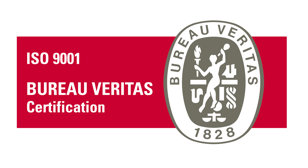Article

Clinical trials : implementation of the new regulation
Implementation of the new European clinical trials regulation 536/2014 on medicinal products for human use
Since January 31, 2022, the Clinical Trial Information System (CTIS) is online. This effective putting online by the European Medicines Agency (EMA), triggers the entry into force of the new European Regulation (EU) No. 536/2014 on clinical trials adopted in May 2014, and repealing the European Directive (EC) No. 2001/20/EC as well as its transposition into national law.
The CTIS is the cornerstone of this new regulation and aims to implement the European Union (EU) legislation on pharmaceuticals under the Clinical Trials Regulation [(EU) No. 536/2014] by centralizing information and databases of clinical trials throughout the EU, including Iceland, Norway and Lichtenstein.
This Regulation 536/2014 aims to:
- facilitate patient recruitment and thus patient access to treatments;
- create an environment that is conducive to the conduct of clinical trials in the EU, so that the EU remains attractive for clinical research by offering the highest safety standards for participants and
- increase transparency and access to data from these trials.
To this end, the CTIS harmonizes the submission, evaluation and monitoring processes for CTIS supported clinical trials and facilitates patient recruitment.
Under the former Directive 2001/20/EC, sponsors had to submit separate clinical trial applications to each national competent authority and ethics committee in each country in order to obtain regulatory approval to conduct a clinical trial.
With the launch of the CTIS, a single clinical trial application can be submitted by sponsors for multiple countries.
The EMA manages the CTIS in collaboration with EU Member States and EEA countries, as well as the European Commission (EC). The evaluation, authorization and monitoring of clinical trials are the responsibility of the EU Member States and EEA countries.
Transition Period
EU Member States and EEA countries carry out their legal responsibilities for the evaluation and supervision of clinical trials using the CTIS:
- From today to 31/01/2022, clinical trial sponsors may choose to submit an application to start a clinical trial through CTIS or in accordance with the provisions of the former directive 2001/20/EC (Directive repealed by this new regulation).
- As of 31/01/2023, clinical trial sponsors will have to submit an application to start a clinical trial through the CTIS (thus complying with the new regulation for new trials, reference to the old directive will be impossible).
- As of 31/01/2025, any ongoing trial approved under the former directive 2001/20/EC will fall under the new regulation 536/2014 and the information on it will have to be submitted to the CTIS.
"Transparency", the key word of this major overhaul
This new regulation advocates transparency by making public a larger number of documents, most of which will be part of the technical file for the marketing authorization (MA). These documents are, for example, the clinical trial protocol, the clinical trial organization, the evaluation and decision on the conduct of the clinical trial, the summary of the results of the clinical trial, the popularized summary, the report of the study, the inspections and so on...
The unpublished information is listed in Article 81 of the said regulation and concerns:
- personal data (cf RGPD 45/2001);
- commercially confidential information, in particular the marketing authorization status of the medicine, unless there is an overriding public interest;
- confidential communications between Member States in the preparation of their evaluation;
- supervision of clinical trials by Member States.
In conclusion, the entry into force of this new regulation via the CTIS is likely to increase the number of data that will be included in the state of the art for the patentability of new inventions, in particular concerning inventions relating to new protocols or new therapeutic indications resulting from clinical studies conducted in the European Union. In the highly competitive pharmaceutical sector, it will therefore be necessary to take into account this new regulation and to adapt the timing of the patent application if necessary.
Our experts in the pharmaceutical sector are at your disposal to advise you advise you on the best strategy to protect your drugs under development.


























